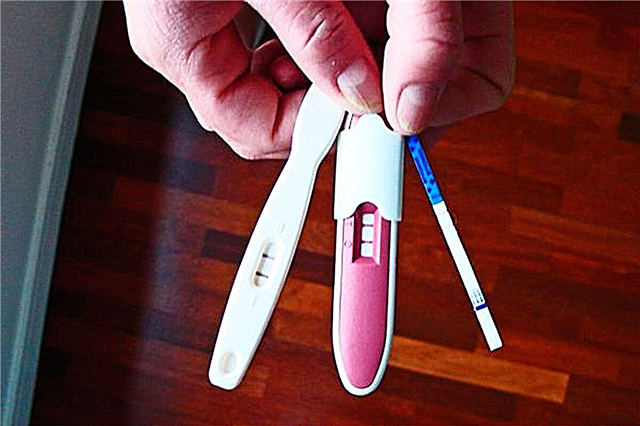
Every mother should know how inflammatory diseases of the female genital organs can manifest themselves. This will help to suspect the disease in time and consult a doctor in a timely manner. Not every mother knows how to cope with vulvitis in girls.
What it is?
An acute inflammatory process that affects the external reproductive organs in girls is called vulvitis. This is a fairly common pathology in pediatric gynecology. The peak incidence is between two and ten years of age. In adolescence, there were practically no cases of vulvitis.
The external genitals include the vagina, labia majora and minora, clitoris, and the outer urethra. These organs cover the outside of the mucous membranes, lined with epithelial cells. Due to various causes of the disease, inflammation develops. It launches a whole cascade of inflammatory reactions that provoke the appearance of uncomfortable symptoms in the baby.

Various provoking factors can lead to the development of vulvitis:
- Improper or overly active hygiene procedures. Washing with an antiseptic every day can change the pH of the vaginal environment. With regular use of such funds, the mucous membrane of the external genital organs dries out excessively and becomes very susceptible to the penetration of any infection.
- Infection with various helminths... When these parasites multiply, they release a large amount of toxic products that can cause various irritations and redness in the genital area.
- Severe hypothermia. This leads to a decrease in the level of local immunity. Too low body temperature contributes to the violation of blood flow in the genitals, which becomes the cause of the inflammatory process.
- Chronic diseases. Most often, pathologies of the gastrointestinal tract and the endocrine system provoke inflammation in the reproductive organs. To eliminate adverse symptoms, it is required to prescribe treatment for the underlying chronic disease, which also provoked inflammation in the genitals.
- Traumatic. Babies in the first years of life often examine their bodies. During this they can inadvertently hurt themselves. In adolescents, vulvitis can occur after using tampons during menstruation.

Kinds
A variety of causes leading to the development of vulvitis contributes to the emergence of various variants of diseases. This classification is very important. It helps to correctly determine the form of the disease, as well as to establish the necessary algorithm for diagnostic measures and therapeutic prescriptions.
There are several types of vulvitis:
- Allergic. They are found with various types of allergies. Infants may have an atopic variant. In some cases, it occurs as a result of prolonged wearing of diapers. Their prolonged use leads to a violation of the vaginal pH and the more rapid development of various irritations.
- Bacterial. They arise as a result of infection with bacteria. Most often these are staphylococci, streptococci, Haemophilus influenzae, as well as aerobic microorganisms. They cause predominantly purulent forms of the disease. Treatment requires antibiotics.
- Viral. They develop as a result of infection with various types of viruses. Herpes is the most common culprit. With a decrease in immunity, the baby has inflammatory changes in the external genital area.
- Fungal. Most often they develop as a result of candidal infection. They can also occur in often sick and weak babies. Quite often they are registered in girls with diabetes mellitus. To eliminate adverse symptoms, antifungal drugs are required, mainly in the form of ointments or creams.
- Traumatic. They occur after various damages. The mucous membranes of the external genital organs in childhood are very loose and easily injured. When a bacterial infection enters through various microdamages, a secondary infection can develop.
- Adhesive. Appear in the chronic course of vulvitis. They occur only in cases where timely treatment was not provided. With this form, the labia grows together. One of the first symptoms of this variant of the disease, doctors consider impaired urination.

Symptoms
Vulvitis can develop with the development of numerous adverse symptoms. With a mild course of the disease, they do not appear bright enough. In such cases, only a pediatric gynecologist can detect the disease. A more severe course of the disease is accompanied by the appearance of a whole complex of adverse symptoms, which are rather difficult to treat.
The main clinical manifestations of vulvitis include:
- Puffiness and inflammation of the external genital organs.
- Redness in the vagina and genitals.
- Expressed discomfort in the anogenital zone.
- The appearance of discharge. They can be of different colors and consistencies. With bacterial infections, yellow or green purulent discharge appears. With viral vulvitis, a gray discharge is formed, a fairly liquid consistency. Fungal lesions are accompanied by the appearance of abundant whitish discharge that crumbles easily.
- Violation of urination. The urge to urinate becomes more frequent. At the same time, the portions of urine decrease, but the total amount per day does not change.
- Soreness in the external genital area. Inflammation provokes an increase in pain syndrome when urinating.
- Increased body temperature. In severe cases, fever may develop. A sluggish disease is not accompanied by a change in body temperature. It may not exceed the norm during the entire acute period of the disease.
- Changes in behavior and general condition. Girls become more nervous and moody. In some cases, sleep is disturbed. The baby's mood becomes very depressed.


What does it look like?
With the development of vulvitis, the external genitals become swollen and bright red. When examining the anogenital zone, you can see severe irritation and redness. In some cases, the inflammatory process even spreads to the inner thighs. With allergic forms of vulvitis, traces of scratching can be found.
The labia are enlarged several times, swelling quite strongly. With a moderate course of the disease, the entrance to the vagina is closed. When probing the inguinal lymph nodes, one can find their enlargement and moderate pain. In some cases, they increase to 1-1.5 cm.
For fungal variants of the disease, the appearance of abundant white discharge is characteristic. They cover the entire surface of the labia majora and labia minora. When implementing a hygienic toilet of the external genital organs and removing secretions, bleeding of the mucous membranes may increase. The discharge has a rather unpleasant odor.
With an adhesive vulvitis, the labia are spliced. Usually, this variant of the disease occurs in babies in the first two years of life. The fusion of the labia comes from the level of the clitoris. The severity of the symptom depends on the severity of the disease. If fusion was not noticed in the early stages, then after a while this leads to a narrowing of the lumen and a decrease in the entrance to the vagina.
Treatment
To eliminate adverse symptoms, an effective treatment is required. When the first manifestations of vulvitis appear, the baby should be shown to a pediatric gynecologist. The doctor will conduct a clinical examination and prescribe all the necessary tests, as well as studies. Colposcopy and bacterial culture of the discharge allow you to accurately identify the causative agent of the infection, as well as determine the sensitivity to antibiotics.
In the treatment of vulvitis are used:
- Pain relievers. They help to eliminate soreness in the area of inflamed external genital organs. They are prescribed in the form of ointments, creams and various sprays. For the treatment of vulvitis, you can use "Miramistin", "Furacilin", "Levomekol" and other means.
- Antiseptic. Eliminate irritation and redness. They also successfully cope with adverse symptoms and infusions prepared from medicinal plants. For treatment, decoctions of chamomile, calendula, string, oak bark are used. They can be used in the form of baths, lotions, as well as for hygienic treatment of the genitals.
- Anti-inflammatory... They are prescribed to eliminate severe inflammation. They help to eliminate the consequences of allergic vulvitis, accompanied by the appearance of severe itching and burning. Various antibacterial and hormonal ointments are used: tetracycline, hydrocortisone, erythromycin and others. They should only be applied to clean and pre-dried genitals.
- Antihistamines. They help to eliminate pronounced edema of the genitals, as well as eliminate itching and burning. These funds are especially effective in the treatment of allergic forms of vulvitis. Are prescribed in the form of tablets for 5-7 days. These include "Suprastin", "Claritin", "Fenistil", "Tavegil", "Diphenhydramine" and others.
- Fortifying. These include rectal suppositories that help boost immunity. In pediatric practice, interferon-based drugs are most often used. Regular use of multivitamin complexes will help strengthen the immune system, make the baby stronger, which is very useful for fighting the disease.
Dr. Komarovsky will name the causes of vulvovaginitis in a girl and warn mothers against using soap too often when hygiene girls.



